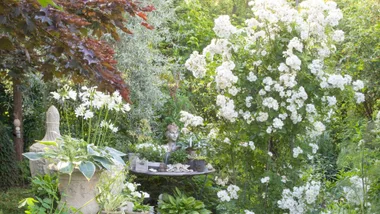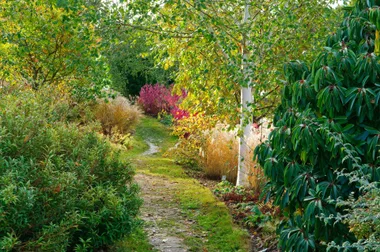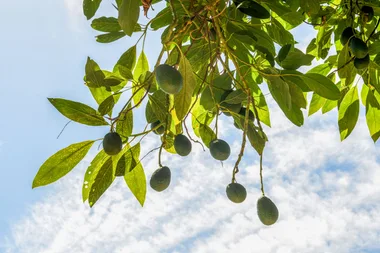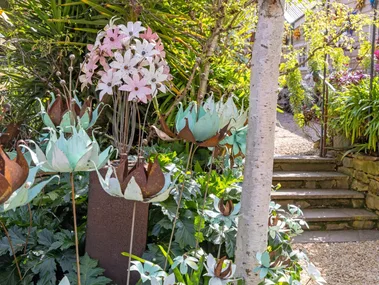The graceful sword lily – or gladiolus, as we know it best – is a true gift to the summer garden.
WATCH: Johanna and Graham visit Hartdale Gardens
Few other flowers offer such showy tall spires of blooms, and the range of colours is huge, covering the brightest of shades as well as the softer pastel spectrum.
Gladdies are more than just a flower shop bloom – they are fabulous planted in garden beds, especially as tall background plants, and like all bulbs, they are ultra easy to grow.
So if you are after something to replace all those spring blooms that looked so beautiful just a couple of months back, take a fresh look at growing gladiolus.
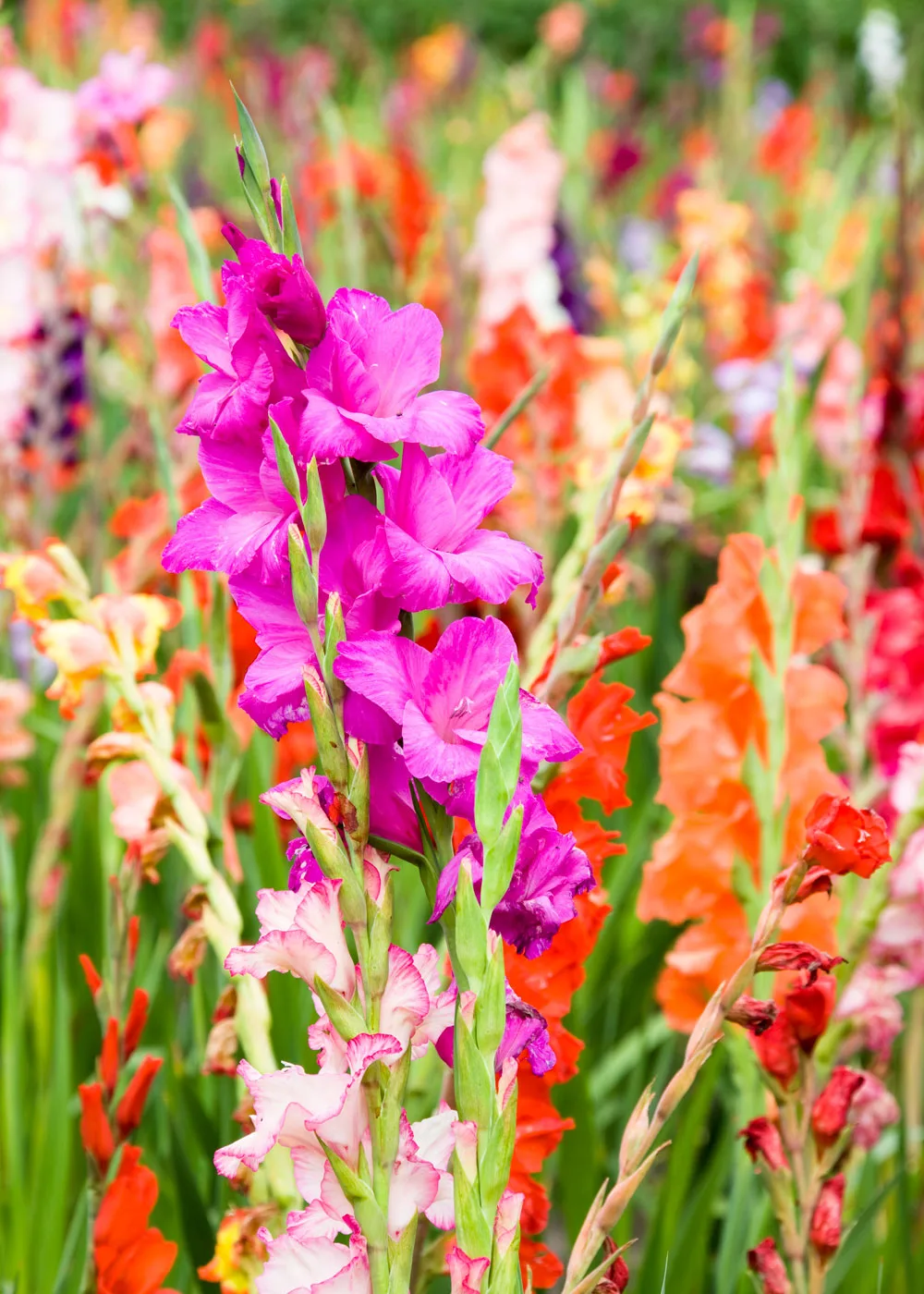
Gladiolus varieties Australia
There are more than 50 varieties available in Australia, so there’s a gladiolus to suit all colour tastes.
Hybridising has become a hot topic among horticulture enthusiasts, and new and glamorous varieties continue to pop up, many with bicoloured flowers. As a result, gladdies have morphed into a stylish addition to flower beds, then there’s their cutting potential – homegrown flowers make impressive vase subjects.
As garden blooms go, gladdies are high flyers. Depending on the variety, these majestic flowers can grow up to 1.5-2m tall, and are perfect for creating a colourful backdrop to lower bushier plants.
There are also compact forms of gladiolus that are suitable for smaller gardens or growing in pots, that reach about 1m in height. All are easily grown in a sunny spot, and look great teamed with ornamental grasses or summer-blooming lavender.

Planting gladiolus bulbs
Plant the corms about 10-15cm deep with the growing point facing upwards. The plants are best spaced about 8-15cm apart.
Because of their slender profile, gladioli have the most visual impact when planted in generous numbers, so set them out in clumps of at least six and up to 12 plants.
To prevent the possibility of stem damage from wind, it’s a good idea to tie plants to stakes as they grow – one stake can support three or four plants in a clump. After planting the corms, always water in well.

When to plant gladiolus bulbs in Australia
Being summer-flowering bulbs, gladioli are best planted during spring after the threat of frost has passed.
Flowering takes about 90 to 100 days from planting, so if you want to extend the colour spectacle you can plant the corms in batches, resulting in extended flower displays from summer into autumn. Gardeners living in temperate frost-free areas can start planting the corms from June to mid-September.
In colder frosty areas, it’s safer to wait until late August to plant. In tropical zones, corms can be planted year round, ensuring you can have a gorgeous flower show, no matter the season. You’ll be glad to have gladdies in your garden!
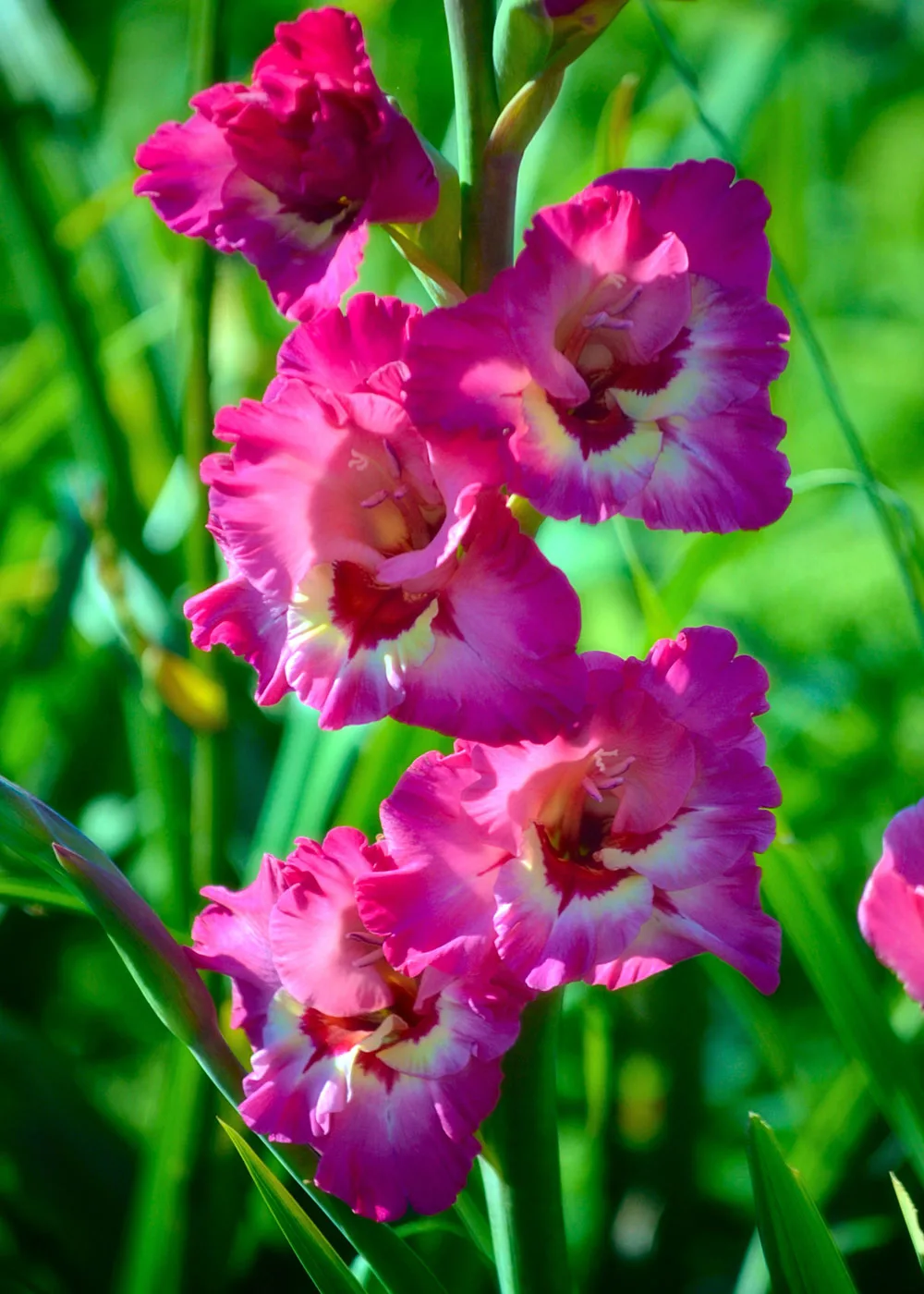
Caring for gladiolus
Position
Sunny positions are essential for strong stems and prolific flowering. Because the flower stems are so tall, they are best planted in a spot that is protected from strong winds.
Soil
While they are not particularly fussy about the soil they grow in, they don’t like having wet feet for long. Avoid damp spots, and plant into free-draining soils, to which organic matter has been added – well-rotted manure or compost is ideal.
Fertiliser
Little fertiliser is needed, as the flowers draw their nutrition from the corm. However, adding a complete fertiliser about a month before flowering will help produce strong and vibrant blooms. While plants are in flower, you can also feed them fortnightly with a soluble fertiliser formulated for flowering plants, such as Yates Thrive Flower & Fruit.

Water
Blooming in summer as they do, gladdies will need watering at least once a week, but to caring for these plants during a heatwave may require a little more effort. A nice deep watering is more effective than a light splash with the hose every night. After the flowers die back, you can allow the plants to dry out a little more.
Care
Traditionally, gardeners are advised to dig up the corms at the end of the season for storage, but in mild climates you’ll find you can enjoy years of flowers without any special attention. If you live in a frost-prone region, however, you may get better results by digging up the corms after the leaves have yellowed and died back. Wash, dry and store them in a dry place for replanting the following year.
Pests
When the plants are in bloom, thrips can prove to be major garden pests. They will sometimes eat their way into the developing buds and prevent the flower from opening. Keep an eye out for these tiny insects (small brown or black specks about 1mm long) and spray with an insecticide such as Confidor or MaxGuard.

Will gladiolus grow back every year?
Yes, they can! Gladioli from a corm, which is a flat type of bulb. This means that if they are happy in their position, they can multiply and spread, so you can get a nice clump that will produce blooms year after year with very little effort. What’s not to love?
Using gladiolus in a flower arrangement
Gladiolus make exquisite cut flowers and, with a rich palette of colours, they suit all sorts of flower arrangements.
Cut the flower stems before the blooms have opened, when the first signs of colour appear on the bottom florets. Aim to leave about a third of the stem intact and use the foliage sparingly, as it provides nourishment for the flower next year.
The tips of the flowers are attracted to sunlight, so laying them down flat for a few hours allows them to angle their tips towards light, causing bent and twisted flowers. Flower arrangers use this method to produce interesting floral displays.
You may also like
How to get more hydrangea flowers
